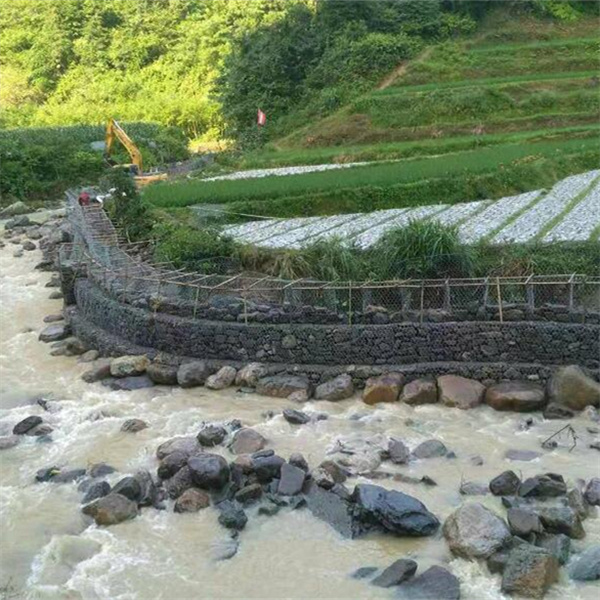ഒക്ട് . 15, 2024 09:17 Back to list
Factory for Quality Gabion Stones and Related Products
The Role of Gabion Stones in Modern Construction
Gabion stones have emerged as a crucial component in modern construction and landscaping. These stones, typically housed in wire mesh containers, provide a versatile and efficient solution for various engineering applications. Whether for erosion control, retaining walls, or aesthetic landscaping, gabion stones offer several advantages that appeal to both contractors and property developers.
What Are Gabion Stones?
Gabion, derived from the Italian word gabbione, meaning big cage, refers to wire mesh cages filled with stones, rock, or other materials. They are typically employed in civil engineering and landscaping projects due to their durability, adaptability, and ease of installation. Gabion stones can vary in size and type, ranging from small gravel to larger boulders, providing a customizable solution depending on project requirements.
Applications of Gabion Stones
1. Erosion Control One of the most common applications of gabion stones is for erosion control along riverbanks, shorelines, and slopes. The structures help to absorb the impact of water and reduce the speed of flowing currents, thereby minimizing soil loss and protecting vegetation.
2. Retaining Walls Gabion walls serve as effective retaining structures. They provide necessary support to hold back soil on sloped landscapes, preventing landslides and offering stability for roads, pathways, and buildings. With their porous nature, these walls also facilitate drainage, mitigating hydrostatic pressure behind the structure.
3. Noise Barriers In urban environments, gabion structures can be used as noise barriers. Their mass and density help block sound waves, creating a quieter environment for residential and commercial properties located near busy roadways or railways.
4. Landscaping and Aesthetics Gabion stones add a unique aesthetic element to landscaping projects. They can be designed as decorative walls, garden borders, or seating areas, blending natural materials with construction. The natural stones used in gabions can vary in color, shape, and texture, allowing landscape architects to enhance the visual appeal of outdoor spaces.
gabion stones factory

5. Wildlife Habitats When appropriately designed, gabion structures can function as habitats for various wildlife species. By providing a network of spaces and crevices, these structures can promote biodiversity and support local ecosystems.
Advantages of Using Gabion Stones
- Cost-Effective Gabion stones are often an economical choice. The materials can be sourced locally, and their installation typically requires less labor and fewer resources compared to traditional concrete structures.
- Sustainability Gabion walls can be constructed using natural stones, which are environmentally friendly. They can also incorporate recycled materials, reducing the environmental footprint of construction projects. Moreover, the porous nature of gabions allows for natural drainage, minimizing waterlogging.
- Adaptability Gabions can be adapted to various terrains and project needs. They can be stacked, shaped, and sized according to specific requirements, making them suitable for a wide array of applications.
- Low Maintenance Once installed, gabion structures require minimal maintenance. They are resistant to weathering and degradation, allowing them to withstand harsh environmental conditions for extended periods.
Conclusion
Gabion stones represent a remarkable fusion of functionality and design in the construction industry. Their diverse applications, cost-effectiveness, and environmental benefits make them an appealing choice for various projects. As the demand for sustainable and innovative construction materials grows, gabion stones are sure to remain a significant player in shaping the landscape of modern engineering and landscaping. As more developers and contractors discover the advantages of using gabion stones, we can expect to see further integration of these structures into our built environment, ultimately contributing to more resilient and aesthetically pleasing infrastructure.
-
Wire Mesh Thickness Impact on Gabion Wall Load Bearing
NewsAug.12,2025
-
Ultimate Guide to Hexagonal Gabion Box
NewsAug.12,2025
-
Types of Rocks for Gabion Baskets Durability and Aesthetics
NewsAug.12,2025
-
Standard Gabion Box Sizes and Their Industrial Applications
NewsAug.12,2025
-
Easy Guide to Building Garden Gabion Cages at Home
NewsAug.12,2025
-
Drainage Solutions for Gabion Mesh Structures
NewsAug.12,2025
-
Visualizing Gabion 3D Integration in Urban Landscapes with Rendering
NewsJul.23,2025






